Spoke 16: The Biblewheel and The 16th Century
(Go back to main Menu)
Charles V Holy Roman Emperor
Charles put Pope Clement in prison.
Charles V's son was named Philip the king of Spain. There were a few Philips who succeeded him in Spain. Charles V is also the son of Philip the Handsome.
William Tyndale was jailed by Charles with the request of king Henry VIII before his death:
Eventually, Tyndale was betrayed by Henry Phillips[30].
In 1535, Tyndale was arrested and jailed in the castle of Vilvoorde (Filford) outside Brussels for over a year. In 1536, he was convicted of heresy and executed by strangulation, after which his body was burnt at the stake.
Both Acts 16 and 2Chronicles 16 mention prison:
Acts 16:24 (KJV) 24 Who, having received such a charge, thrust them into the inner prison, and made their feet fast in the stocks.
2 Chronicles 16:10 (KJV) 10 Then Asa was wroth with the seer, and put him in a prison house; for [he was] in a rage with him because of this [thing]. And Asa oppressed [some] of the people the same time.
And perhaps the name Phillips is related to the Philippian jailer:
Acts 16:12 (KJV)
And from thence to Philippi, which is the chief city of that part of Macedonia, [and] a colony: and we were in that city abiding certain days.
Acts 16:23 (KJV)
And when they had laid many stripes upon them, they cast [them] into prison, charging the jailor to keep them safely:
https://en.wikipedia.org/wiki/Charles_V,_Holy_Roman_Emperor
(Go back to main Menu)
Charles V Holy Roman Emperor
Charles put Pope Clement in prison.
Charles V's son was named Philip the king of Spain. There were a few Philips who succeeded him in Spain. Charles V is also the son of Philip the Handsome.
William Tyndale was jailed by Charles with the request of king Henry VIII before his death:
Eventually, Tyndale was betrayed by Henry Phillips[30].
In 1535, Tyndale was arrested and jailed in the castle of Vilvoorde (Filford) outside Brussels for over a year. In 1536, he was convicted of heresy and executed by strangulation, after which his body was burnt at the stake.
Both Acts 16 and 2Chronicles 16 mention prison:
Acts 16:24 (KJV) 24 Who, having received such a charge, thrust them into the inner prison, and made their feet fast in the stocks.
2 Chronicles 16:10 (KJV) 10 Then Asa was wroth with the seer, and put him in a prison house; for [he was] in a rage with him because of this [thing]. And Asa oppressed [some] of the people the same time.
And perhaps the name Phillips is related to the Philippian jailer:
Acts 16:12 (KJV)
And from thence to Philippi, which is the chief city of that part of Macedonia, [and] a colony: and we were in that city abiding certain days.
Acts 16:23 (KJV)
And when they had laid many stripes upon them, they cast [them] into prison, charging the jailor to keep them safely:
Charles V, Holy Roman Emperor
| Charles V | |||||
|---|---|---|---|---|---|
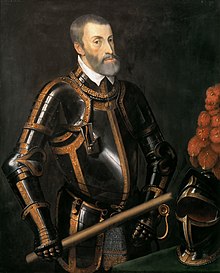 | |||||
| Reign | 28 June 1519 – 27 August 1556 | ||||
| Coronation | |||||
| Predecessor | Maximilian I | ||||
| Successor | Ferdinand I | ||||
| King of Spain | |||||
| Reign | 23 January 1516 – 16 January 1556 | ||||
| Predecessor | Joanna (Castile) Ferdinand II (Aragon) | ||||
| Successor | Philip II | ||||
| Co-monarch | Joanna | ||||
| Reign | 25 September 1506 – 25 October 1555[1] | ||||
| Predecessor | Philip of Castile | ||||
| Successor | Philip II of Spain | ||||
| Archduke of Austria | |||||
| Reign | 12 January 1519 – 28 April 1521 | ||||
| Predecessor | Maximilian I | ||||
| Successor | Ferdinand I | ||||
| Born | 24 February 1500 Ghent, Flanders, Habsburg Netherlands | ||||
| Died | 21 September 1558 (aged 58) Yuste, Spain | ||||
| Burial | El Escorial, San Lorenzo de El Escorial, Spain | ||||
| Spouse | Isabella of Portugal | ||||
| Issue see full list |
Illegitimate: | ||||
| |||||
| House | Habsburg | ||||
| Father | Philip of Castile | ||||
| Mother | Joanna of Castile | ||||
| Religion | Roman Catholicism | ||||
| Signature |  | ||||
Charles V (Spanish: Carlos; German: Karl; Italian: Carlo; Dutch: Karel; Latin: Carolus; French: Charles Quint; [a] 24 February 1500 – 21 September 1558) was ruler of both the Holy Roman Empire from 1519 and the Spanish Empire (as Charles I of Spain) from 1516, as well as of the lands of the former Duchy of Burgundy from 1506. He stepped down from these and other positions by a series of abdications between 1554 and 1556. Through inheritance, he brought together under his rule extensive territories in western, central, and southern Europe, and the Spanish viceroyalties in the Americas and Asia. As a result, his domains spanned nearly 4 million square kilometres (1.5 million square miles), and were the first to be described as "the empire on which the sun never sets".[2]
Charles was the heir of three of Europe's leading dynasties: Valois of Burgundy, Habsburg of Austria, and Trastámara of Spain. As heir of the House of Burgundy, he inherited areas in the Netherlands and around the eastern border of France. As a Habsburg, he inherited Austria and other lands in central Europe, and was also elected to succeed his grandfather, Maximilian I, as Holy Roman Emperor. As a grandson of the Catholic Monarchs of Spain, from the Spanish House of Trastámara he inherited the Crown of Castile, which was developing a nascent empire in the Americas and Asia, and the Crown of Aragon, which included a Mediterranean empire extending to southern Italy. Charles was the first king to rule Castile and Aragon simultaneously in his own right (as a unified Spain), and as a result he is often referred to as the first king of Spain.[3][a] The personal union under Charles of the Holy Roman Empire with the Spanish Empire was the closest Europe has come to a universal monarchy[4] since the time of Charlemagne in the 9th century.
Because of widespread fears that his vast inheritance would lead to the realization of a universal monarchy and that he was trying to create a European hegemony, Charles was the object of hostility from many enemies.[5] His reign was dominated by war, particularly by three major simultaneous prolonged conflicts: the Italian Wars with France, the struggle to halt the Turkish advance into Europe, and the conflict with the German princes resulting from the Protestant Reformation.[6] The French wars, mainly fought in Italy, lasted for most of his reign. Enormously expensive, they led to the development of the first modern professional army in Europe, the Tercios.
The struggle with the Ottoman Empire was fought in Hungary and the Mediterranean. The Turkish advance was halted at the Siege of Vienna in 1529, and a lengthy war of attrition, conducted on Charles' behalf by his younger brother Ferdinand (King of Hungary and archduke of Austria), continued for the rest of Charles's reign. In the Mediterranean, although there were some successes, he was unable to prevent the Ottomans' increasing naval dominance and the piratical activity of the Barbary pirates. Charles opposed the Reformation, and in Germany he was in conflict with Protestant nobles who were motivated by both religious and political opposition to him. He could not prevent the spread of Protestantism and was ultimately forced to concede the Peace of Augsburg of 1555, which divided Germany along denominational lines.
While Charles did not typically concern himself with rebellions, he was quick to put down three particularly dangerous rebellions; the Revolt of the Comuneros in Castile, the revolt of the Arumer Zwarte Hoop in Frisia, and, later in his reign, the Revolt of Ghent (1539). Once the rebellions were quelled the essential Castilian and Burgundian territories remained mostly loyal to Charles throughout his rule.
Charles's Spanish dominions were the chief source of his power and wealth, and they became increasingly important as his reign progressed. In the Americas, Charles sanctioned the conquest by Castilian conquistadores of the Aztec and Inca empires. Castilian control was extended across much of South and Central America. The resulting vast expansion of territory and the flows of South American silver to Castile had profound long term effects on Spain.
Charles was only 56 when he abdicated, but after 40 years of active rule he was physically exhausted and sought the peace of a monastery, where he died at the age of 58. The Holy Roman Empire passed to his younger brother Ferdinand, archduke of Austria, while the Spanish Empire, including the possessions in the Netherlands and Italy, was inherited by Charles's son Philip II of Spain. The two empires would remain allies until the 18th century (when the Spanish branch of the House of Habsburg became extinct).
Heritage and early life
Charles was born in 1500 as the eldest son of Philip the Handsome and Joanna of Castile in the Flemish city of Ghent, which was part of the Habsburg Netherlands.[7] The culture and courtly life of the Burgundian Low Countries were an important influence in his early life. He was tutored by William de Croÿ (who would later become his first prime minister), and also by Adrian of Utrecht (later Pope Adrian VI). It is said that Charles spoke several vernacular languages: he was fluent in French and Dutch, later adding an acceptable Castilian Spanish(which Charles called the "divine language"[8]) required by the Castilian Cortes Generales as a condition for becoming King of Castile. He also gained a decent command of German (in which he was not fluent prior to his election), though he never spoke it as well as French.[9] A witticism sometimes attributed to Charles is: "I speak Spanish to God, Italian to women, French to men and German to my horse." A variant of the quote is attributed to him by Swift in his 1726 Gulliver's Travels, but there are many other variants and it is often attributed instead to Frederick the Great.[10]
From his Burgundian ancestors he inherited an ambiguous relationship with the Kings of France. Charles shared with France his mother tongue and many cultural forms. In his youth he made frequent visits to Paris, then the largest city of Western Europe. In his words: "Paris is not a city, but a world" (Lutetia non urbs, sed orbis). He was betrothed to both Louise and Charlotte of Valois, daughters of King Francis I of France, but they both died in childhood. Charles also inherited the tradition of political and dynastic enmity between the royal and the Burgundian ducal lines of the Valois dynasty. Charles was very attached to the Burgundian Low Countries where he had been raised. These lands were very rich and contributed significantly to the wealth of the Empire. He also spent much time there, mainly in Brussels. This stands in contrast with the attitude of his son Philip who only visited the Low Countries once.
Until the 1540s, Charles did not spend much time in Germany. He frequently was in Northern Italy (then part of the Holy Roman Empire). He never actually governed his Austrian dominions and made his brother Ferdinand the ruler of these lands in 1521, as well as his representative in the Holy Roman Empire during his absence. In spite of this, the Emperor had a close relationship with some German families, like the House of Nassau, many of which were represented at his court in Brussels. Some German princes or noblemen accompanied him in his military campaigns against France or the Ottomans, and the bulk of his army was generally composed of German troops, especially the Imperial Landsknechte.[11]
Indeed, in 1519, he was elected because he was considered a German prince while his main opponent was French. Nonetheless, in the long term, the growth of Lutheranism and Charles' staunch Catholicism alienated him from various German princes who finally fought against him in the 1540s and the 1550s. It is important to note, though, that other states of the Empire chose to support him in his war, and that he had the constant support of his brother, in spite of their strained personal relationship.[12] Whereas Charles spent much of his final years as a ruler trying to address the issue of religion in the Empire, it would ultimately be Ferdinand, by then much more popular in Germany, who would bring peace to the German lands.
Though Spain was the core of his personal possessions and though he had many Iberian ancestors, in his earlier years Charles felt as if he were viewed as a foreign prince. He became fluent in Spanish late in his life, as it was not his first language. Nonetheless, he spent much of his life in Spain, including his final years in a Spanish monastery, and his heir, later Philip II, was born and raised in Spain. Indeed, Charles's motto, Plus Ultra ('Further Beyond'), became the national motto of Spain. He had many Spanish counselors and, except for the revolt of the comuneros in the 1520s, Spain remained mostly loyal to him. Spain was also his most important military asset, as it provided a great number of generals, as well as the formidable Spanish tercios, considered the best infantry of its time. Many Spaniards, however, believed that their resources were being used to sustain a policy that was not in the country's interest.[13] They usually believed that Charles should have focused on the Mediterranean and North Africa instead of Northern or Central Europe.
Portrait gallery
Reign
Burgundy and the Low Countries
In 1506, Charles inherited his father's Burgundian territories, most notably the Low Countries and Franche-Comté. Most of the holdings were fiefs of the German Kingdom (part of the Holy Roman Empire), except his birthplace of Flanders, which was still a French fief, a last remnant of what had been a powerful player in the Hundred Years' War. As he was a minor, his aunt Margaret of Austria (born as Archduchess of Austria and in both her marriages as the Dowager Princess of Asturias and Dowager Duchess of Savoy) acted as regent, as appointed by Emperor Maximilian until 1515. She soon found herself at war with France over the question of Charles' requirement to pay homage to the French king for Flanders, as his father had done. The outcome was that France relinquished its ancient claim on Flanders in 1528.
From 1515 to 1523, Charles's government in the Netherlands also had to contend with the rebellion of Frisian peasants (led by Pier Gerlofs Donia and Wijard Jelckama). The rebels were initially successful but after a series of defeats, the remaining leaders were captured and decapitated in 1523.
Charles extended the Burgundian territory with the annexation of Tournai, Artois, Utrecht, Groningen and Guelders. The Seventeen Provinces had been unified by Charles's Burgundian ancestors, but nominally were fiefs of either France or the Holy Roman Empire. In 1549, Charles issued a Pragmatic Sanction, declaring the Low Countries to be a unified entity of which his family would be the heirs.[14]
The Low Countries held an important place in the Empire. For Charles V personally they were his home, the region where he was born and spent his childhood. Because of trade and industry and the wealth of the region's cities, the Low Countries also represented an important income for the Imperial treasury.
The Burgundian territories were generally loyal to Charles throughout his reign. The important city of Ghent rebelled in 1539 due to heavy tax payments demanded by Charles. The rebellion did not last long, however, as Charles's military response, with reinforcement from the Duke of Alba,[14] was swift and humiliating to the rebels of Ghent.[15][16]
Spain
In the Castilian Cortes of Valladolid in 1506 and of Madrid in 1510, Charles was sworn as the Prince of Asturias, heir-apparent to his mother the Queen Joanna.[19] On the other hand, in 1502, the Aragonese Corts gathered in Saragossa and pledged an oath to Joanna as heiress-presumptive, but the Archbishop of Saragossa expressed firmly that this oath could not establish jurisprudence, that is to say, modify the right of the succession, except by virtue of a formal agreement between the Cortes and the King.[20][21] So, upon the death of King Ferdinand II of Aragon, on 23 January 1516, Joanna inherited the Crown of Aragon, which consisted of Aragon, Catalonia, Valencia, Naples, Sicily and Sardinia, while Charles became Governor General.[22] Nevertheless, the Flemings wished Charles to assume the royal title,[citation needed] and this was supported by his grandfather the emperor Maximilian I and Pope Leo X.
Thus, after the celebration of Ferdinand II's obsequies on 14 March 1516, Charles was proclaimed king of the crowns of Castile and Aragon jointly with his mother. Finally, when the Castilian regent Cardinal Jiménez de Cisnerosaccepted the fait accompli, he acceded to Charles's desire to be proclaimed king and imposed his enstatement throughout the kingdom.[23] Charles arrived in his new kingdoms in autumn of 1517. Jiménez de Cisneros came to meet him but fell ill along the way, not without a suspicion of poison, and he died before meeting the King.[24]
Due to the irregularity of Charles assuming the royal title while his mother, the legitimate queen, was alive, the negotiations with the Castilian Cortes in Valladolid (1518) proved difficult.[25] In the end Charles was accepted under the following conditions: he would learn to speak Castilian; he would not appoint foreigners; he was prohibited from taking precious metals from Castile; and he would respect the rights of his mother, Queen Joanna. The Cortes paid homage to him in Valladolid in February 1518. After this, Charles departed to the crown of Aragon. He managed to overcome the resistance of the Aragonese Cortes and Catalan Corts,[26] and he was finally recognized as king of Aragon and count of Barcelona jointly with his mother.[27] The Kingdom of Navarre had been invaded by Ferdinand of Aragon jointly with Castile in 1512, but he pledged a formal oath to respect the kingdom. On Charles's accession to the Spanish throne, the Parliament of Navarre (Cortes) required him to attend the coronation ceremony (to become Charles IV of Navarre), but this demand fell on deaf ears, and the Parliament kept piling up grievances.
Charles was accepted as sovereign, even though the Spanish felt uneasy with the Imperial style. Spanish kingdoms varied in their traditions. Castile was an authoritarian kingdom, where the monarch's own will easily overrode law and the Cortes. By contrast, in the kingdoms of the crown of Aragon, and especially in the Pyrenean kingdom of Navarre, law prevailed, and the monarchy was a contract with the people. This became an inconvenience and a matter of dispute for Charles V and later kings, since realm-specific traditions limited their absolute power. With Charles, government became more absolute, even though until his mother's death in 1555 Charles did not hold the full kingship of the country.
Soon resistance to the Emperor arose because of heavy taxation to support foreign wars in which Castilians had little interest, and because Charles tended to select Flemings for high offices in Spain and America, ignoring Castilian candidates. The resistance culminated in the Revolt of the Comuneros, which Charles suppressed. Immediately after crushing the Castilian revolt, Charles was confronted again with the hot issue of Navarre when King Henry II attempted to reconquer the kingdom. Main military operations lasted until 1524, when Hondarribia surrendered to Charles's forces, but frequent cross-border clashes in the western Pyrenees only stopped in 1528 (Treaties of Madrid and Cambrai).
After these events, Navarre remained a matter of domestic and international litigation still for a century (a French dynastic claim to the throne did not end until the French Revolution in 1789). Charles wanted his son and heir Philip II to marry the heiress of Navarre, Jeanne d'Albret. Jeanne was instead forced to marry William, Duke of Julich-Cleves-Berg, but that childless marriage was annulled after four years. She next married Antoine de Bourbon, and both she and their son would oppose Philip II in the French Wars of Religion.
Castile became integrated into Charles's empire, and provided the bulk of the empire's financial resources as well as its most effective military units. The enormous budget deficit accumulated during Charles's reign resulted in Spain declaring bankruptcy during the reign of Philip II.[28]
Italy
The Crown of Aragon inherited by Charles included the Kingdom of Naples, the Kingdom of Sicily and the Kingdom of Sardinia. Aragon also previously controlled the Duchy of Milan, but a year before Charles ascended to the throne, it was annexed by France after the Battle of Marignano in 1515. Charles succeeded in re-capturing Milan in 1522, when Imperial troops defeated the Franco-Swiss army at Bicocca. Yet in 1524 Francis I of France retook the initiative, crossing into Lombardy where Milan, along with a number of other cities, once again fell to his attack. Pavia alone held out, and on 24 February 1525 (Charles's twenty-fifth birthday), Charles's Spanish forces captured Francis and crushed his army in the Battle of Pavia, yet again retaking Milan and Lombardy. Spain successfully held on to all of its Italian territories, though they were invaded again on multiple occasions during the Italian Wars.
In addition, Habsburg trade in the Mediterranean was consistently disrupted by the Ottoman Empire. In 1538 a Holy League consisting of all the Italian states and Spain was formed to drive the Ottomans back, but it was defeated at the Battle of Preveza. Decisive naval victory eluded Charles; it would not be achieved until after Charles's death, at the Battle of Lepanto in 1571.
America
During Charles's reign, the Spanish territories in the Americas were considerably extended by conquistadores like Hernán Cortés and Francisco Pizarro. They conquered the large Aztec and Inca empires and incorporated them into the Empire as the Viceroyalties of New Spain and Peru between 1519 and 1542. Combined with the circumnavigation of the globe by the Magellan expedition in 1522, these successes convinced Charles of his divine mission to become the leader of Christendom, which still perceived a significant threat from Islam. The conquests also helped solidify Charles's rule by providing the state treasury with enormous amounts of bullion. As the conquistador Bernal Díaz del Castillo observed, "We came to serve God and his Majesty, to give light to those in darkness, and also to acquire that wealth which most men covet."[29]
On 28 August 1518 Charles issued a charter authorising the transportation of slaves direct from Africa to the Americas. Up until that point (since at least 1510), African slaves had usually been transported to Spain or Portugal and had then been transhipped to the Caribbean. Charles’s decision to create a direct, more economically viable Africa to America slave trade fundamentally changed the nature and scale of this terrible human trafficking industry.[30]
In 1528 Charles assigned a concession in Venezuela Province to Bartholomeus V. Welser, in compensation for his inability to repay debts owed. The concession, known as Klein-Venedig (little Venice), was revoked in 1546. In 1550, Charles convened a conference at Valladolid in order to consider the morality of the force used against the indigenous populations of the New World, which included figures such as Bartolomé de las Casas.
Charles V is credited with the first idea of constructing an American Isthmus canal in Panama as early as 1520.[31]
Holy Roman Empire
After the death of his paternal grandfather, Maximilian, in 1519, Charles inherited the Habsburg Monarchy. He was also the natural candidate of the electors to succeed his grandfather as Holy Roman Emperor. He defeated the candidacies of Frederick III, Elector of Saxony, Francis I of France, and Henry VIII of England. The electors gave Charles the crown on 28 June 1519. On 26 October 1520 he was crowned in Germany and some ten years later, on 22 February 1530, he was crowned Holy Roman Emperor by Pope Clement VII in Bologna, the last emperor to receive a papal coronation.[32][33]
Despite holding the imperial throne, Charles's real authority was limited by the German princes. They gained a strong foothold in the Empire's territories, and Charles was determined not to let this happen in the Netherlands. An inquisition was established as early as 1522. In 1550, the death penalty was introduced for all cases of unrepentant heresy. Political dissent was also firmly controlled, most notably in his place of birth, where Charles, assisted by the Duke of Alba, personally suppressed the Revolt of Ghent in mid-February 1540.[14]
Charles abdicated as emperor in 1556 in favor of his brother Ferdinand; however, due to lengthy debate and bureaucratic procedure, the Imperial Diet did not accept the abdication (and thus make it legally valid) until 24 February 1558. Up to that date, Charles continued to use the title of emperor.
France
Much of Charles's reign was taken up by conflicts with France, which found itself encircled by Charles's empire while it still maintained ambitions in Italy. In 1520, Charles visited England, where his aunt, Catherine of Aragon, urged her husband, Henry VIII, to ally himself with the emperor. In 1508 Charles was nominated by Henry VII to the Order of the Garter.[34] His Garter stall plate survives in Saint George's Chapel.
The first war with Charles's great nemesis Francis I of France began in 1521. Charles allied with England and Pope Leo X against the French and the Venetians, and was highly successful, driving the French out of Milanand defeating and capturing Francis at the Battle of Pavia in 1525. To gain his freedom, Francis ceded Burgundy to Charles in the Treaty of Madrid, as well as renouncing his support of Henry II's claim over Navarre.
When he was released, however, Francis had the Parliament of Paris denounce the treaty because it had been signed under duress. France then joined the League of Cognac that Pope Clement VII had formed with Henry VIII of England, the Venetians, the Florentines, and the Milanese to resist imperial domination of Italy. In the ensuing war, Charles's sack of Rome (1527)and virtual imprisonment of Pope Clement VII in 1527 prevented the Pope from annulling the marriage of Henry VIII of England and Charles's aunt Catherine of Aragon, so Henry eventually broke with Rome, thus leading to the English Reformation.[35][36] In other respects, the war was inconclusive. In the Treaty of Cambrai (1529), called the "Ladies' Peace" because it was negotiated between Charles's aunt and Francis' mother, Francis renounced his claims in Italy but retained control of Burgundy.
A third war erupted in 1536. Following the death of the last Sforza Duke of Milan, Charles installed his son Philip in the duchy, despite Francis' claims on it. This war too was inconclusive. Francis failed to conquer Milan, but he succeeded in conquering most of the lands of Charles's ally, the Duke of Savoy, including his capital Turin. A truce at Nice in 1538 on the basis of uti possidetis ended the war but lasted only a short time. War resumed in 1542, with Francis now allied with Ottoman Sultan Suleiman I and Charles once again allied with Henry VIII. Despite the conquest of Nice by a Franco-Ottoman fleet, the French could not advance toward Milan, while a joint Anglo-Imperial invasion of northern France, led by Charles himself, won some successes but was ultimately abandoned, leading to another peace and restoration of the status quo ante bellum in 1544.
A final war erupted with Francis' son and successor, Henry II, in 1551. Henry won early success in Lorraine, where he captured Metz, but French offensives in Italy failed. Charles abdicated midway through this conflict, leaving further conduct of the war to his son, Philip II, and his brother, Ferdinand I, Holy Roman Emperor.
Conflicts with the Ottoman Empire
Charles fought continually with the Ottoman Empire and its sultan, Suleiman the Magnificent. The defeat of Hungary at the Battle of Mohács in 1526 "sent a wave of terror over Europe."[37][38] The Muslim advance in Central Europe was halted at the Siege of Vienna in 1529.
Suleiman won the contest for mastery of the Mediterranean, in spite of Spanish victories such as the conquest of Tunis in 1535. The regular Ottoman fleet came to dominate the Eastern Mediterranean after its victories at Preveza in 1538 and Djerba in 1560 (shortly after Charles's death), which severely decimated the Spanish marine arm. At the same time, the Muslim Barbary corsairs, acting under the general authority and supervision of the sultan, regularly devastated the Spanish and Italian coasts, crippling Spanish trade and chipping at the foundations of Habsburg power.
In 1536 Francis I of France allied himself with Suleiman against Charles. While Francis was persuaded to sign a peace treaty in 1538, he again allied himself with the Ottomans in 1542 in a Franco-Ottoman alliance. In 1543 Charles allied himself with Henry VIII and forced Francis to sign the Truce of Crépy-en-Laonnois. Later, in 1547, Charles signed a humiliating[39] treaty with the Ottomans to gain himself some respite from the huge expenses of their war.[40]
Charles V made overtures to the Safavid Empire to open a second front against the Ottomans, in an attempt at creating a Habsburg-Persian alliance. Contacts were positive, but rendered difficult by enormous distances. In effect, however, the Safavids did enter in conflict with the Ottoman Empire in the Ottoman-Safavid War, forcing it to split its military resources.[41]
Protestant Reformation
The issue of the Protestant Reformation was first brought to the imperial attention under Charles V. As Holy Roman Emperor, Charles called Martin Luther to the Diet of Worms in 1521, promising him safe conduct if he would appear. Initially dismissing Luther's theses as "an argument between monks", he later outlawed Luther and his followers in that same year but was tied up with other concerns and unable to take action against Protestantism. The Peasants' Revolt in Germany, fueled by Anabaptist rhetoric, broke out from 1524 to 1526, and in 1531 the Lutheran Schmalkaldic League was formed. Charles delegated increasing responsibility for Germany to his brother Ferdinand while he concentrated on problems elsewhere.
In 1545, the opening of the Council of Trent began the Counter-Reformation and the Catholic cause was also supported by some of the princes of the Holy Roman Empire. In 1546 (the year of Luther's death), he outlawed the Schmalkaldic League (which had occupied the territory of another prince). The next year his forces drove the League's troops out of southern Germany, and defeated John Frederick, Elector of Saxony and Philip of Hesse at the Battle of Mühlberg, capturing both. At the Augsburg Interim in 1548, he created a solution giving certain allowances to Protestants until the Council of Trent would restore unity. However, members of both sides resented the Interim and some actively opposed it. In 1552 Protestant princes, in alliance with Henry II of France, rebelled again, which caused Charles to retreat to the Netherlands.[citation needed]
Marriage
During his lifetime, Charles V had several mistresses, but only during his bachelorhood and only once during his widowhood; there are no records of him ever having had any extramarital affairs during his marriage.
On 21 December 1507, Charles was first betrothed to 11-year old Mary, the daughter of King Henry VII of England and younger sister to the future King Henry VIII of England, who was to take the throne in two years. However, the engagement was called off in 1513 on the advice of Thomas Wolsey and Mary was instead married off to King Louis XII of France in 1514.
After his ascension to the Spanish throne, negotiations for Charles's marriage began shortly after his arrival in Spain, with the Spanish nobles expressing their wishes for him to marry his first cousin Isabella of Portugal, the daughter of King Manuel I of Portugal and Charles's aunt Maria of Aragon. The nobles desired for Charles to marry a princess of Spanish blood and a marriage to Isabella would secure an alliance between Spain and Portugal. The 18 year old King, however, was in no hurry to marry and ignored the nobles' advice. Instead of marrying Isabella, he sent his sister Eleanor to marry Isabella's widowed father King Manuel in 1518. In 1521, on the advice of his Flemish advisors, especially William de Croÿ, Charles became engaged to his other first cousin, Mary, daughter of his aunt Catherine of Aragon and King Henry VIII, in order to secure an alliance with England. However, this engagement was very problematic since Mary was only 6 years old at the time, sixteen years Charles's junior, which meant that he would have to wait for her to be old enough to marry.
By 1525, Charles was no longer interested in an alliance with England and could not wait any longer to have legitimate children and heirs. Following his victory in the Battle of Pavia, Charles abandoned the idea of an English alliance, cancelled his engagement to Mary and decided to marry Isabella and form an alliance with Portugal. He wrote to Isabella's brother King John III of Portugal, making a double marriage contract - Charles would marry Isabella and John would marry Charles's youngest sister Catherine. A marriage to Isabella was more beneficiary for Charles, as she was closer to him in age, was fluent in Spanish and provided him with a very handsome dowry of 900,000 Portuguese cruzados or Castilian folds that would help to solve his financial problems brought on by the Italian Wars.
On 10 March 1526, Charles and Isabella met at the Alcázar Palace in Seville. The marriage was originally a political arrangement, but on their first meeting, the couple fell deeply in love, with Isabella captivating the Emperor with her beauty and charm. They were married that very same night in a quiet ceremony in the Hall of Ambassadors just after midnight. Following their wedding, Charles and Isabella spent a long and happy honeymoon at the Alhambra in Granada. Wishing to establish their residence in the Alhambra palaces, Charles began the construction of the Palace of Charles V in 1527, which was intended as a permanent residence befitting an emperor and empress. However, the palace was not completed during their lifetime and remained roofless until the late 20th century.[42]
Despite the Emperor's long absences due to political affairs abroad, the marriage was a happy one, as both partners were always devoted and faithful to each other.[43] The Empress acted as regent of Spain during her husband's absences and she proved herself to be a good politician and ruler, thoroughly impressing the Emperor with many of her political gains and decisions.
The marriage lasted for thirteen years until Isabella's death in 1539. The Empress contracted a fever during the third month of her seventh pregnancy, which resulted in antenatal complications that caused her to miscarry to a stillborn son. Her health further deteriorated due to an infection and she died two weeks later on 1 May 1539, aged 35. Charles was left so grief-stricken by his wife's death that he shut himself up in a monastery for two months where he prayed and mourned for her in solitude.[44] In the aftermath, Charles never recovered from Isabella's death, dressing in black for the rest of his life to show his eternal mourning, and, unlike most kings of the time, he never remarried. In memory of his wife, the Emperor commissioned the painter Titian to paint several posthumous portraits of Isabella; the portraits that were produced included Titian's Portrait of Empress Isabel of Portugal and La Gloria.[45] Charles kept these portraits with him whenever he travelled and they were among those that he later brought with him to the Monastery of Yuste in 1557 after his retirement.[46]
Charles also paid tribute to Isabella's memory with music when, in 1540, he commissioned the Flemish composer Thomas Crecquillon to compose new music as a memorial to her. Crecquillon composed his Missa 'Mort m'a privé in memory of the Empress, which itself expresses the Emperor's grief and great wish for a heavenly reunion with his beloved wife.[47]
Health
Charles suffered from an enlarged lower jaw, a deformity that became considerably worse in later Habsburg generations, giving rise to the term Habsburg jaw. This deformity may have been caused by the family's long history of inbreeding, which was commonly practiced in royal families of that era to maintain dynastic control of territory.[citation needed] He suffered from epilepsy[48] and was seriously afflicted with gout, presumably caused by a diet consisting mainly of red meat.[49] As he aged, his gout progressed from painful to crippling. In his retirement, he was carried around the monastery of St. Yuste in a sedan chair. A ramp was specially constructed to allow him easy access to his rooms.[50]
Abdications and later life
Charles abdicated the parts of his empire piecemeal. First he abdicated the thrones of Sicily and Naples, both fiefs of the Papacy, and the Duchy of Milan to his son Philip in 1554. Upon Charles's abdication of Naples on 25 July, Philip was invested with the kingdom (officially "Naples and Sicily") on 2 October by Pope Julius III. The abdication of the throne of Sicily, sometimes dated to 16 January 1556, must have taken place before Joanna's death in 1555. There is a record of Philip being invested with this kingdom (officially "Sicily and Jerusalem") on 18 November 1554 by Julius. These resignations are confirmed in Charles's will from the same year.[51] The most famous—and public—abdication of Charles took place a year later, on 25 October 1555, when he announced to the States General of the Netherlands his abdication of those territories and the county of Charolais and his intention to retire to a monastery.[51] He abdicated as ruler of the Spanish Empire in January 1556, with no fanfare, and gave these possessions to Philip.[51] On 27 August 1556, he abdicated as Holy Roman Emperor[b] in favor of his brother Ferdinand, although the abdication was not formally accepted by the Electors of the Empire until 1558.[54] The delay had been at the request of Ferdinand, who had been concerned about holding a risky election in 1556.[51]
Charles retired to the Monastery of Yuste in Extremadura but continued to correspond widely and kept an interest in the situation of the empire. He suffered from severe gout. Some scholars think Charles decided to abdicate after a gout attack in 1552 forced him to postpone an attempt to recapture the city of Metz, where he was later defeated. He lived alone in a secluded monastery, with clocks lining every wall, which some historians believe were symbols of his reign and his lack of time.[55] In an act designed to "merit the favour of heaven", about six months before his death Charles staged his own funeral, complete with shroud and coffin, after which he "rose out of the coffin, and withdrew to his apartment, full of those awful sentiments, which such a singular solemnity was calculated to inspire." [56]
Death
In August 1558, Charles was taken seriously ill with what was later revealed to be malaria.[57] He died in the early hours of the morning on 21 September 1558, at the age of 58, holding in his hand the cross that his wife Isabella had been holding when she died.[58]
Charles was originally buried in the chapel of the Monastery of Yuste, but he left a codicil in his last will and testament asking for the establishment of a new religious foundation in which he would be reburied with Isabella.[59] Following his return to Spain in 1559, their son Philip undertook the task of fulfilling his father's wish when he founded the Monastery of San Lorenzo de El Escorial. After the Monastery's Royal Crypt was completed in 1574, the bodies of Charles and Isabella were relocated and re-interred into a small vault directly underneath the altar of the famous Basilica of the Monastery, in accordance with Charles's wishes to be buried "half-body under the altar and half-body under the priest's feet" side by side with Isabella. They remained in this vault until 1654 when they were later moved into the Royal Pantheon of Kings by their great-grandson Philip IV, who, in doing so, disrespected his great-grandfather's wishes.[60]
On one side of the Basilica are bronze effigies of Charles and Isabella, with effigies of their daughter Maria of Austria and Charles's sisters Eleanor of Austria and Maria of Hungary behind them. Exactly adjacent to them on the opposite side of the Basilica are effigies of their son Philip with three of his wives and their ill-fated grandson Carlos, Prince of Asturias.
Issue
Charles and Isabella had seven children, though only three survived to adulthood:
| Name | Portrait | Lifespan | Notes |
|---|---|---|---|
| Philip II of Spain | 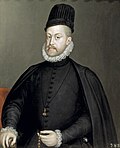 | 21 May 1527 – 13 September 1598 | Only surviving son, successor of his father in the Spanish crown. |
| Maria |  | 21 June 1528 – 26 February 1603 | Married her first cousin Maximilian II, Holy Roman Emperor. |
| Ferdinand | 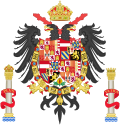 | 22 November 1529 – 13 July 1530 | Died in infancy. |
| Son |  | 29 June 1534 | Stillborn |
| Joanna | 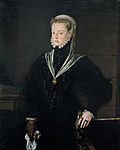 | 26 June 1535 – 7 September 1573 | Married her first cousin João Manuel, Prince of Portugal. |
| John |  | 19 October 1537 – 20 March 1538 | Died in infancy. |
| Son |  | 21 April 1539 | Stillborn. |
Due to Philip II being a grandson of Manuel I of Portugal through his mother he was in the line of succession to the throne of Portugal, and claimed it after his uncle's death (Henry, the Cardinal-King, in 1580), thus establishing the Iberian Union.
Charles also had four illegitimate children:
- Margaret of Austria (1522 – 1586), daughter of Johanna Maria van der Gheynst, a servant of Charles I de Lalaing, Seigneur de Montigny, daughter of Gilles Johann van der Gheynst and wife Johanna van der Caye van Cocamby. Married firstly with Alessandro de' Medici, Duke of Florence and secondly with Ottavio Farnese, Duke of Parma.
- Joanna of Austria (1522 – 1530), daughter of a noble lady from Nassau.
- Tadea of Austria (1523? – ca. 1562), daughter of Orsolina della Penna. Married with Sinibaldo di Copeschi.
- John of Austria (1547 – 1578), son of Barbara Blomberg, victor of the Battle of Lepanto
Historians suspect he fathered Isabel of Castile, the illegitimate daughter of his step-grandmother Germaine of Foix.
Titles
| Title | Date from | Date to | Regnal name | |
|---|---|---|---|---|
| Titular Duke of Burgundy | 25 September 1506 | 16 January 1556 | Charles II | |
| Duke of Brabant | 25 September 1506 | 25 October 1555 | Charles II | |
| Duke of Limburg | 25 September 1506 | 25 October 1555 | Charles II | |
| Duke of Lothier | 25 September 1506 | 25 October 1555 | Charles II | |
| Duke of Luxemburg | 25 September 1506 | 25 October 1555 | Charles III | |
| Margrave of Namur | 25 September 1506 | 25 October 1555 | Charles II | |
| [61] Count Palatine of Burgundy | 25 September 1506 | 5 February 1556 | Charles II | |
| Count of Artois | 25 September 1506 | 25 October 1555 | Charles II | |
| [62] Count of Charolais | 25 September 1506 | 21 September 1558 | Charles II | |
| Count of Flanders | 25 September 1506 | 25 October 1555 | Charles III | |
| Count of Hainault | 25 September 1506 | 25 October 1555 | Charles II | |
| Count of Holland | 25 September 1506 | 25 October 1555 | Charles II | |
| Count of Zeeland | 25 September 1506 | 25 October 1555 | Charles II | |
| Duke of Guelders | 12 September 1543 | 25 October 1555 | Charles III | |
| Count of Zutphen | 12 September 1543 | 25 October 1555 | Charles II | |
| King of Castile and León | 14 March 1516 | 16 January 1556 | Charles I (with Joanna, 14 March 1516 – 12 April 1555) | |
| King of Aragon and Sicily | 14 March 1516 | 16 January 1556 | Charles I (with Joanna, 14 March 1516 – 12 April 1555) | |
| Count of Barcelona | 14 March 1516 | 16 January 1556 | Charles I | |
| King of Naples | 14 March 1516 | 25 July 1554 | Charles IV (with Joanna III, 14 March 1516 – 25 July 1554) | |
| King of the Romans | 28 June 1519 | 24 February 1530 | Charles V | |
| Holy Roman Emperor | 24 February 1530 | 24 February 1558 | Charles V | |
| Archduke of Austria | 12 January 1519 | 12 January 1521 | Charles I | |
The titles of King of Hungary, of Bohemia, and of Croatia, were incorporated into the imperial family during Charles's reign, but they were held, both nominally and substantively, by his brother Ferdinand, who initiated a four-century-long Habsburg rule over these eastern territories.
However, according Charles V testament, the titles of King of Hungary, of Dalmatia, and of Croatia and others were legated to his grandson, Infante Carlos, Prince of Asturias who was the son of Philip II of Spain, and who died young. Charles's full titulature went as follows:
Charles, by the grace of God, Holy Roman Emperor, forever August, King of Germany, King of Italy, King of all Spains, of Castile, Aragon, León, of Hungary, of Dalmatia, of Croatia, Navarra, Grenada, Toledo, Valencia, Galicia, Majorca, Sevilla, Cordova, Murcia, Jaén, Algarves, Algeciras, Gibraltar, the Canary Islands, King of Two Sicilies, of Sardinia, Corsica, King of Jerusalem, King of the Western and Eastern Indies, of the Islands and Mainland of the Ocean Sea, Archduke of Austria, Duke of Burgundy, Brabant, Lorraine, Styria, Carinthia, Carniola, Limburg, Luxembourg, Gelderland, Neopatria, Württemberg, Landgrave of Alsace, Prince of Swabia, Asturia and Catalonia, Count of Flanders, Habsburg, Tyrol, Gorizia, Barcelona, Artois, Burgundy Palatine, Hainaut, Holland, Seeland, Ferrette, Kyburg, Namur, Roussillon, Cerdagne, Drenthe, Zutphen, Margrave of the Holy Roman Empire, Burgau, Oristano and Gociano, Lord of Frisia, the Wendish March, Pordenone, Biscay, Molin, Salins, Tripoli and Mechelen.
Coat of arms of Charles V
Coat of arms of Charles I of Spain and V of Germany according to the description: Arms of Charles I added to those of Castile, Leon, Aragon, Two Sicilies and Granada present in the previous coat, those of Austria, ancient Burgundy, modern Burgundy, Brabant, Flandersand Tyrol. Charles I also incorporates the pillars of Hercules with the inscription "Plus Ultra", representing the overseas empire and surrounding coat with the collar of the Golden Fleece, as sovereign of the Order ringing the shield with the imperial crown and Acola double-headed eagle of the Holy Roman Empire and behind it the Spanish Cross of Burgundy. From 1520 added to the corresponding quarter to Aragon and Sicily, one in which the arms of Jerusalem, Naples and Navarre are incorporated.
https://en.wikipedia.org/wiki/Charles_V,_Holy_Roman_Emperor
| Comparing Zechariah the 16th Book of the 2nd Cycle with the 16th Century | |
|---|---|
| Zechariah 12 - Listen 1 The burden of the word of the LORD for Israel, saith the LORD, which stretcheth forth the heavens, and layeth the foundation of the earth, and formeth the spirit of man within him. 2 Behold, I will make Jerusalem a cup of trembling unto all the people round about, when they shall be in the siege both against Judah [and] against Jerusalem. 3 And in that day will I make Jerusalem a burdensome stone for all people: all that burden themselves with it shall be cut in pieces, though all the people of the earth be gathered together against it. 4 In that day, saith the LORD, I will smite every horse with astonishment, and his rider with madness: and I will open mine eyes upon the house of Judah, and will smite every horse of the people with blindness. 5 And the governors of Judah shall say in their heart, The inhabitants of Jerusalem [shall be] my strength in the LORD of hosts their God. 6 In that day will I make the governors of Judah like an hearth of fire among the wood, and like a torch of fire in a sheaf; and they shall devour all the people round about, on the right hand and on the left: and Jerusalem shall be inhabited again in her own place, [even] in Jerusalem. 7 The LORD also shall save the tents of Judah first, that the glory of the house of David and the glory of the inhabitants of Jerusalem do not magnify [themselves] against Judah. 8 In that day shall the LORD defend the inhabitants of Jerusalem; and he that is feeble among them at that day shall be as David; and the house of David [shall be] as God, as the angel of the LORD before them. 9 And it shall come to pass in that day, [that] I will seek to destroy all the nations that come against Jerusalem. 10 And I will pour upon the house of David, and upon the inhabitants of Jerusalem, the spirit of grace and of supplications: and they shall look upon me whom they have pierced, and they shall mourn for him, as one mourneth for [his] only [son], and shall be in bitterness for him, as one that is in bitterness for [his] firstborn. 11 In that day shall there be a great mourning in Jerusalem, as the mourning of Hadadrimmon in the valley of Megiddon. 12 And the land shall mourn, every family apart; the family of the house of David apart, and their wives apart; the family of the house of Nathan apart, and their wives apart; 13 The family of the house of Levi apart, and their wives apart; the family of Shimei apart, and their wives apart; 14 All the families that remain, every family apart, and their wives apart. | |
| Comparing 1Peter the 16th Book of the 3rd Cycle with the 16th Century | |
|---|---|
| 1Peter 3 - Listen 1 Likewise, ye wives, [be] in subjection to your own husbands; that, if any obey not the word, they also may without the word be won by the conversation of the wives; 2 While they behold your chaste conversation [coupled] with fear. 3 Whose adorning let it not be that outward [adorning] of plaiting the hair, and of wearing of gold, or of putting on of apparel; 4 But [let it be] the hidden man of the heart, in that which is not corruptible, [even the ornament] of a meek and quiet spirit, which is in the sight of God of great price. 5 For after this manner in the old time the holy women also, who trusted in God, adorned themselves, being in subjection unto their own husbands: 6 Even as Sara obeyed Abraham, calling him lord: whose daughters ye are, as long as ye do well, and are not afraid with any amazement. 7 Likewise, ye husbands, dwell with [them] according to knowledge, giving honour unto the wife, as unto the weaker vessel, and as being heirs together of the grace of life; that your prayers be not hindered. 8 Finally, [be ye] all of one mind, having compassion one of another, love as brethren, [be] pitiful, [be] courteous: 9 Not rendering evil for evil, or railing for railing: but contrariwise blessing; knowing that ye are thereunto called, that ye should inherit a blessing. 10 For he that will love life, and see good days, let him refrain his tongue from evil, and his lips that they speak no guile: 11 Let him eschew evil, and do good; let him seek peace, and ensue it. 12 For the eyes of the Lord [are] over the righteous, and his ears [are open] unto their prayers: but the face of the Lord [is] against them that do evil. 13 And who [is] he that will harm you, if ye be followers of that which is good? 14 But and if ye suffer for righteousness' sake, happy [are ye]: and be not afraid of their terror, neither be troubled; 15 But sanctify the Lord God in your hearts: and [be] ready always to [give] an answer to every man that asketh you a reason of the hope that is in you with meekness and fear: 16 Having a good conscience; that, whereas they speak evil of you, as of evildoers, they may be ashamed that falsely accuse your good conversation in Christ. 17 For [it is] better, if the will of God be so, that ye suffer for well doing, than for evil doing. 18 For Christ also hath once suffered for sins, the just for the unjust, that he might bring us to God, being put to death in the flesh, but quickened by the Spirit: 19 By which also he went and preached unto the spirits in prison; 20 Which sometime were disobedient, when once the longsuffering of God waited in the days of Noah, while the ark was a preparing, wherein few, that is, eight souls were saved by water. 21 The like figure whereunto [even] baptism doth also now save us (not the putting away of the filth of the flesh, but the answer of a good conscience toward God,) by the resurrection of Jesus Christ: 22 Who is gone into heaven, and is on the right hand of God; angels and authorities and powers being made subject unto him. | |
| Comparing 2Chronicles 16 with the 16th Century | |
|---|---|
| 2Chronicles 16 - Listen 1 In the six and thirtieth year of the reign of Asa Baasha king of Israel came up against Judah, and built Ramah, to the intent that he might let none go out or come in to Asa king of Judah. 2 Then Asa brought out silver and gold out of the treasures of the house of the LORD and of the king's house, and sent to Benhadad king of Syria, that dwelt at Damascus, saying, 3 [There is] a league between me and thee, as [there was] between my father and thy father: behold, I have sent thee silver and gold; go, break thy league with Baasha king of Israel, that he may depart from me. 4 And Benhadad hearkened unto king Asa, and sent the captains of his armies against the cities of Israel; and they smote Ijon, and Dan, and Abelmaim, and all the store cities of Naphtali. 5 And it came to pass, when Baasha heard [it], that he left off building of Ramah, and let his work cease. 6 Then Asa the king took all Judah; and they carried away the stones of Ramah, and the timber thereof, wherewith Baasha was building; and he built therewith Geba and Mizpah. 7 And at that time Hanani the seer came to Asa king of Judah, and said unto him, Because thou hast relied on the king of Syria, and not relied on the LORD thy God, therefore is the host of the king of Syria escaped out of thine hand. 8 Were not the Ethiopians and the Lubims a huge host, with very many chariots and horsemen? yet, because thou didst rely on the LORD, he delivered them into thine hand. 9 For the eyes of the LORD run to and fro throughout the whole earth, to shew himself strong in the behalf of [them] whose heart [is] perfect toward him. Herein thou hast done foolishly: therefore from henceforth thou shalt have wars. 10 Then Asa was wroth with the seer, and put him in a prison house; for [he was] in a rage with him because of this [thing]. And Asa oppressed [some] of the people the same time. 11 And, behold, the acts of Asa, first and last, lo, they [are] written in the book of the kings of Judah and Israel. 12 And Asa in the thirty and ninth year of his reign was diseased in his feet, until his disease [was] exceeding [great]: yet in his disease he sought not to the LORD, but to the physicians. 13 And Asa slept with his fathers, and died in the one and fortieth year of his reign. 14 And they buried him in his own sepulchres, which he had made for himself in the city of David, and laid him in the bed which was filled with sweet odours and divers kinds [of spices] prepared by the apothecaries' art: and they made a very great burning for him. | |
| Comparing Acts 16 with the 16th Century | |
|---|---|
| Acts 16 - Listen 1 Then came he to Derbe and Lystra: and, behold, a certain disciple was there, named Timotheus, the son of a certain woman, which was a Jewess, and believed; but his father [was] a Greek: 2 Which was well reported of by the brethren that were at Lystra and Iconium. 3 Him would Paul have to go forth with him; and took and circumcised him because of the Jews which were in those quarters: for they knew all that his father was a Greek. 4 And as they went through the cities, they delivered them the decrees for to keep, that were ordained of the apostles and elders which were at Jerusalem. 5 And so were the churches established in the faith, and increased in number daily. 6 Now when they had gone throughout Phrygia and the region of Galatia, and were forbidden of the Holy Ghost to preach the word in Asia, 7 After they were come to Mysia, they assayed to go into Bithynia: but the Spirit suffered them not. 8 And they passing by Mysia came down to Troas. 9 And a vision appeared to Paul in the night; There stood a man of Macedonia, and prayed him, saying, Come over into Macedonia, and help us. 10 And after he had seen the vision, immediately we endeavoured to go into Macedonia, assuredly gathering that the Lord had called us for to preach the gospel unto them. 11 Therefore loosing from Troas, we came with a straight course to Samothracia, and the next [day] to Neapolis; 12 And from thence to Philippi, which is the chief city of that part of Macedonia, [and] a colony: and we were in that city abiding certain days. 13 And on the sabbath we went out of the city by a river side, where prayer was wont to be made; and we sat down, and spake unto the women which resorted [thither]. 14 And a certain woman named Lydia, a seller of purple, of the city of Thyatira, which worshipped God, heard [us]: whose heart the Lord opened, that she attended unto the things which were spoken of Paul. 15 And when she was baptized, and her household, she besought [us], saying, If ye have judged me to be faithful to the Lord, come into my house, and abide [there]. And she constrained us. 16 And it came to pass, as we went to prayer, a certain damsel possessed with a spirit of divination met us, which brought her masters much gain by soothsaying: 17 The same followed Paul and us, and cried, saying, These men are the servants of the most high God, which shew unto us the way of salvation. 18 And this did she many days. But Paul, being grieved, turned and said to the spirit, I command thee in the name of Jesus Christ to come out of her. And he came out the same hour. 19 And when her masters saw that the hope of their gains was gone, they caught Paul and Silas, and drew [them] into the marketplace unto the rulers, 20 And brought them to the magistrates, saying, These men, being Jews, do exceedingly trouble our city, 21 And teach customs, which are not lawful for us to receive, neither to observe, being Romans. 22 And the multitude rose up together against them: and the magistrates rent off their clothes, and commanded to beat [them]. 23 And when they had laid many stripes upon them, they cast [them] into prison, charging the jailor to keep them safely: 24 Who, having received such a charge, thrust them into the inner prison, and made their feet fast in the stocks. 25 And at midnight Paul and Silas prayed, and sang praises unto God: and the prisoners heard them. 26 And suddenly there was a great earthquake, so that the foundations of the prison were shaken: and immediately all the doors were opened, and every one's bands were loosed. 27 And the keeper of the prison awaking out of his sleep, and seeing the prison doors open, he drew out his sword, and would have killed himself, supposing that the prisoners had been fled. 28 But Paul cried with a loud voice, saying, Do thyself no harm: for we are all here. 29 Then he called for a light, and sprang in, and came trembling, and fell down before Paul and Silas, 30 And brought them out, and said, Sirs, what must I do to be saved? 31 And they said, Believe on the Lord Jesus Christ, and thou shalt be saved, and thy house. 32 And they spake unto him the word of the Lord, and to all that were in his house. 33 And he took them the same hour of the night, and washed [their] stripes; and was baptized, he and all his, straightway. 34 And when he had brought them into his house, he set meat before them, and rejoiced, believing in God with all his house. 35 And when it was day, the magistrates sent the serjeants, saying, Let those men go. 36 And the keeper of the prison told this saying to Paul, The magistrates have sent to let you go: now therefore depart, and go in peace. 37 But Paul said unto them, They have beaten us openly uncondemned, being Romans, and have cast [us] into prison; and now do they thrust us out privily? nay verily; but let them come themselves and fetch us out. 38 And the serjeants told these words unto the magistrates: and they feared, when they heard that they were Romans. 39 And they came and besought them, and brought [them] out, and desired [them] to depart out of the city. 40 And they went out of the prison, and entered into [the house of] Lydia: and when they had seen the brethren, they comforted them, and departed. | |
![Biblewheel: A wise king scattereth the wicked, and bringeth the wheel over them. [Pro 20:26 KJV]](https://blogger.googleusercontent.com/img/b/R29vZ2xl/AVvXsEgiFT6-YCyrSoMjVlsXjQIWJVHaMXsChgqmAIk9mLeNmsgqWXD94k5TOPejvnORdnQ39OL3U4FleKWbC1r46q2t5nYnipb_qDZFNHQR_YXesnm6ucYt2g1DjbBhXnZmML3IHhunsYSeRBU/s1600-r/biblewheel_traced_edited.png)

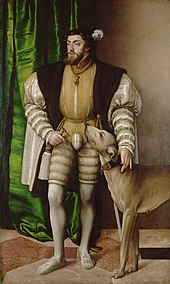


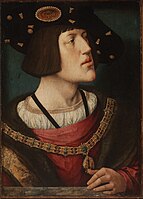
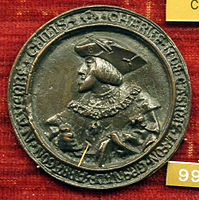

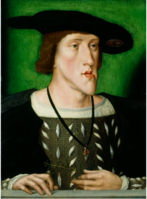
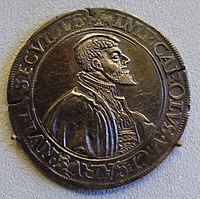


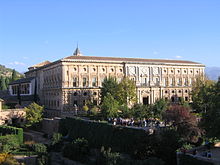







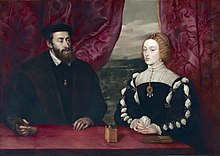














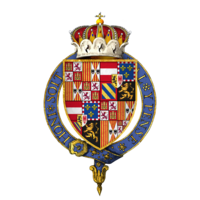
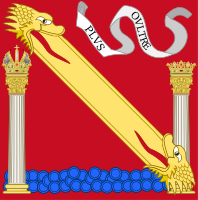
No comments:
Post a Comment